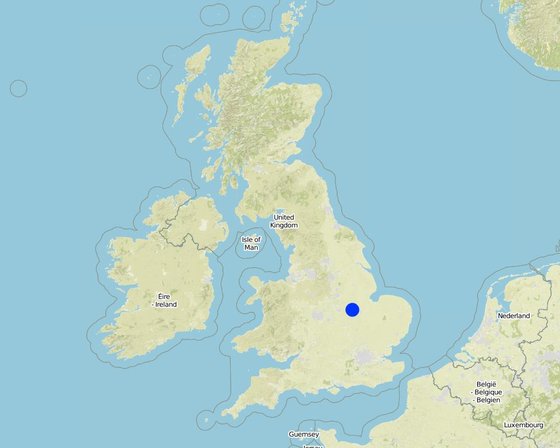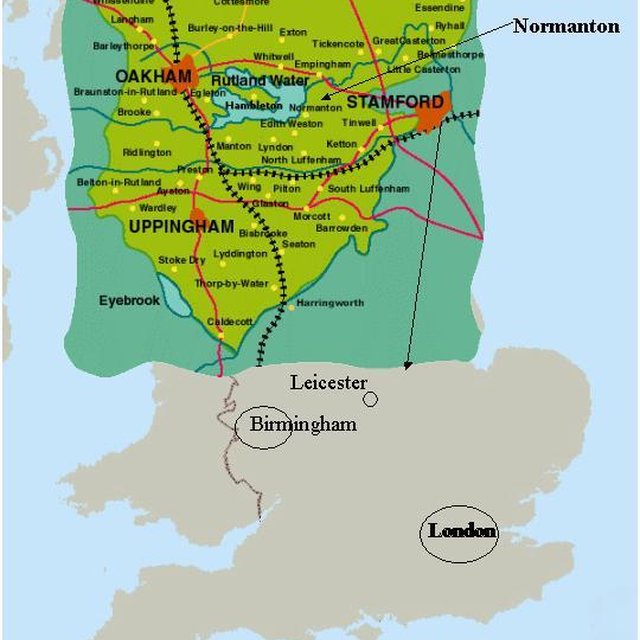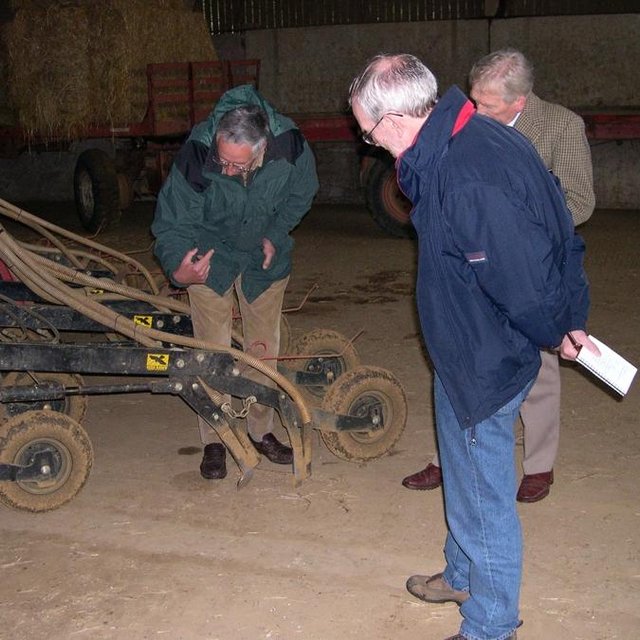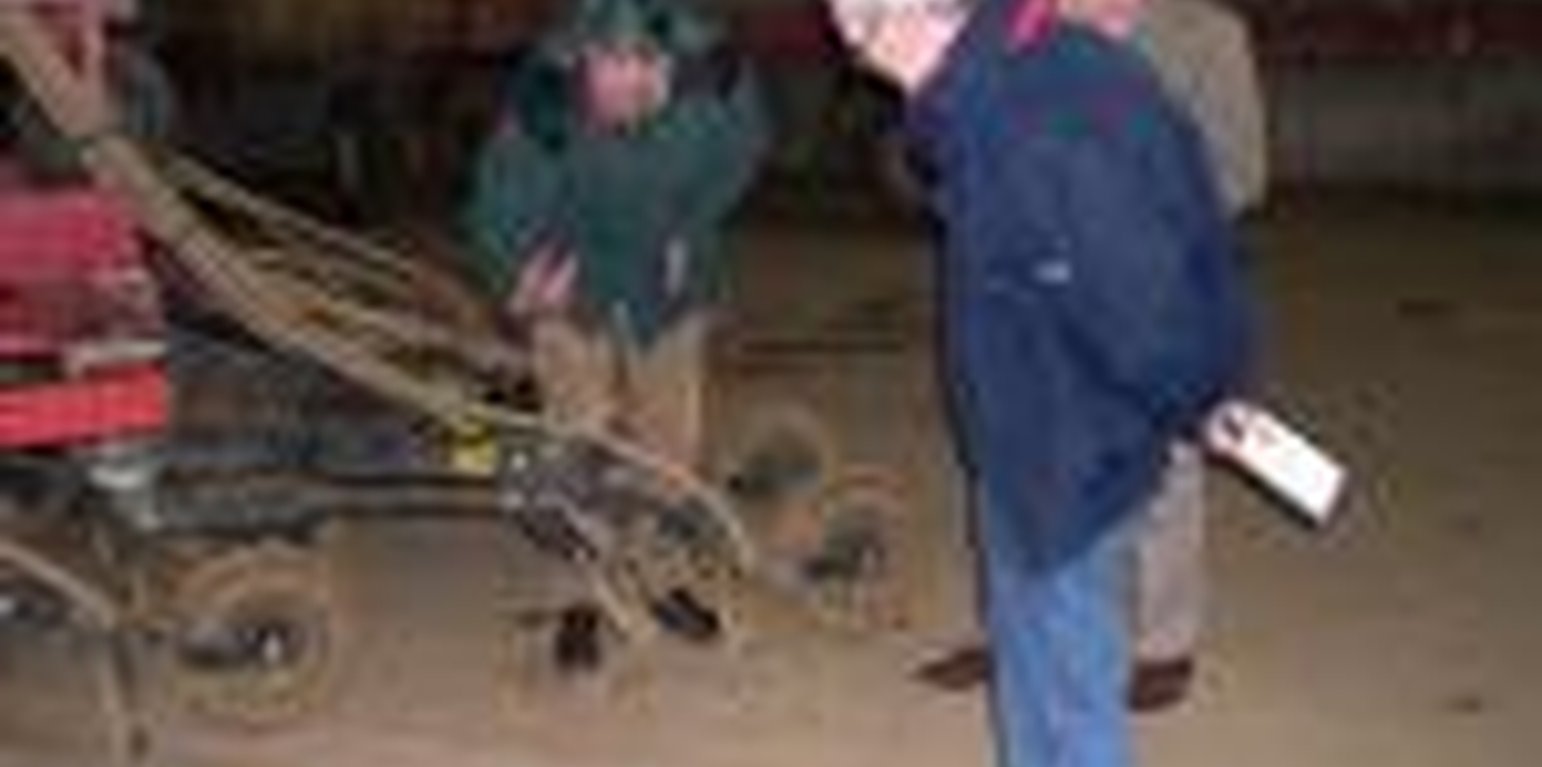Individual experimental farmer: Normanton
(United Kingdom)
Description
Individual farmer seeking information and experimenting with machinery to maintain economic viability
Aims / objectives: Maintenance of economic viability; seeking not to replace employee.
Methods: Seeking information from open days, agricultural shows, machinery manufacturers, demonstrations, other farmers in UK and overseas; experimented with drill on own farm before purchase.
Stages of implementation: Stages of implementation: information seeking over 6 months, trialled drill in one crop, hired drill for following crop on sale and return, purchase of new drill in 2002.
Location

Location: Rutland, United Kingdom
Geo-reference of selected sites
Initiation date: n.a.
Year of termination: n.a.
Type of Approach
-
traditional/ indigenous
-
recent local initiative/ innovative
-
project/ programme based

UK map showing location of Normanton.

Examination of no-tillage drill.
Approach aims and enabling environment
Main aims / objectives of the approach
The Approach focused mainly on other activities than SLM (economic viability)
To find appropriate machinery to maintain economic viability
The SLM Approach addressed the following problems: Loss of ploughman and desire not to replace him but retain economic viability.
Conditions enabling the implementation of the Technology/ ies applied under the Approach
-
Legal framework (land tenure, land and water use rights): Dependent on farmer attitude.
Conditions hindering the implementation of the Technology/ ies applied under the Approach
-
Social/ cultural/ religious norms and values: farmer conservatism
Treatment through the SLM Approach: seeking knowledge and advice;willingess to take risks; family support
-
Availability/ access to financial resources and services: machinery costs; desire to to replace lost employee
Treatment through the SLM Approach: preparation of sound financial case
-
Knowledge about SLM, access to technical support: lack of appropriate expertise
Treatment through the SLM Approach: sought advice from a number of sources
Participation and roles of stakeholders involved
Stakeholders involved in the Approach and their roles
Involvement of local land users/ local communities in the different phases of the Approach
Decision-making on the selection of SLM Technology
Decisions were taken by
-
land users alone (self-initiative)
-
mainly land users, supported by SLM specialists
-
all relevant actors, as part of a participatory approach
-
mainly SLM specialists, following consultation with land users
-
SLM specialists alone
-
politicians/ leaders
Decisions were made based on
-
evaluation of well-documented SLM knowledge (evidence-based decision-making)
-
research findings
-
personal experience and opinions (undocumented)
Technical support, capacity building, and knowledge management
The following activities or services have been part of the approach
-
Capacity building/ training
-
Advisory service
-
Institution strengthening (organizational development)
-
Monitoring and evaluation
-
Research
Capacity building/ training
Training was provided to the following stakeholders
-
land users
-
field staff/ advisers
Form of training
-
on-the-job
-
farmer-to-farmer
-
demonstration areas
-
public meetings
-
courses
Subjects covered
Not structured training but rather through the land manager's attended at workshops and opendays.
Monitoring and evaluation
bio-physical aspects were ad hoc monitored through observations
technical aspects were ad hoc monitored through observations
economic / production aspects were regular monitored through measurements
Financing and external material support
Annual budget in USD for the SLM component
-
< 2,000
-
2,000-10,000
-
10,000-100,000
-
100,000-1,000,000
-
> 1,000,000
Precise annual budget: n.a.
The following services or incentives have been provided to land users
-
Financial/ material support provided to land users
-
Subsidies for specific inputs
-
Credit
-
Other incentives or instruments
Impact analysis and concluding statements
Impacts of the Approach
No
Yes, little
Yes, moderately
Yes, greatly
Did the Approach help land users to implement and maintain SLM Technologies?
Greater knowledge of good soil management.
Main motivation of land users to implement SLM
Sustainability of Approach activities
Can the land users sustain what hat been implemented through the Approach (without external support)?
Conclusions and lessons learnt
Strengths: land user's view
Strengths: compiler’s or other key resource person’s view
-
Self-starter (How to sustain/ enhance this strength: Provision fo expert advice and knowledge to aid decision making)
Weaknesses/ disadvantages/ risks: land user's viewhow to overcome
Weaknesses/ disadvantages/ risks: compiler’s or other key resource person’s viewhow to overcome
-
Dependent on individual attitude
more on-farm research and demonstartion to instill confidence; farmer-to-farmer training
References
Date of documentation: Jan. 12, 2009
Last update: June 25, 2017
Resource persons
-
Ceris A. Jones (cjones@agronomica.org) - SLM specialist
Full description in the WOCAT database
Documentation was faciliated by






